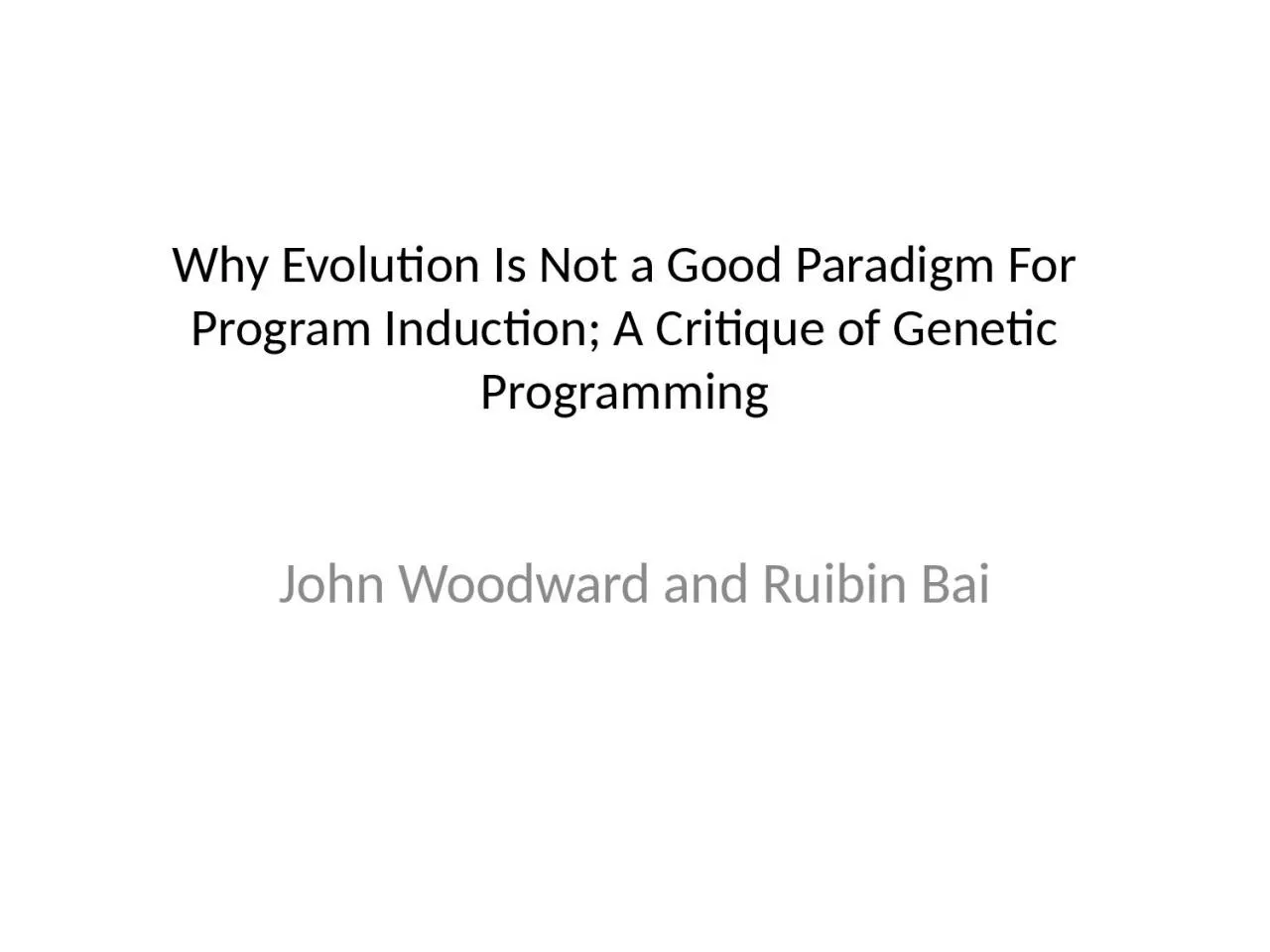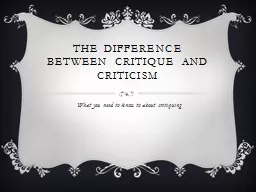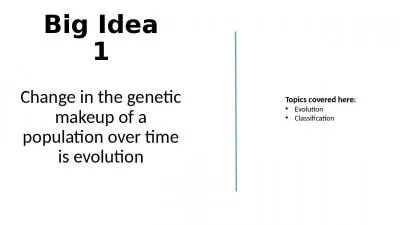PPT-Why Evolution Is Not a Good Paradigm For Program Induction; A Critique of Genetic Programming
Author : alyssa | Published Date : 2024-03-13
John Woodward and Ruibin Bai My interest We would not attempt to try to write computer programs without the constructs of R eusable functions in GP terminology
Presentation Embed Code
Download Presentation
Download Presentation The PPT/PDF document "Why Evolution Is Not a Good Paradigm For..." is the property of its rightful owner. Permission is granted to download and print the materials on this website for personal, non-commercial use only, and to display it on your personal computer provided you do not modify the materials and that you retain all copyright notices contained in the materials. By downloading content from our website, you accept the terms of this agreement.
Why Evolution Is Not a Good Paradigm For Program Induction; A Critique of Genetic Programming: Transcript
Download Rules Of Document
"Why Evolution Is Not a Good Paradigm For Program Induction; A Critique of Genetic Programming"The content belongs to its owner. You may download and print it for personal use, without modification, and keep all copyright notices. By downloading, you agree to these terms.
Related Documents












![[BEST]-Programming 11:C Programming Success in a Day & Rails Programming Professional](https://thumbs.docslides.com/980146/best-programming-11-c-programming-success-in-a-day-rails-programming-professional-made-easy-c-programming-c-programming-c-programming-language-rails-android-programming-ruby-rails-php-css.jpg)
